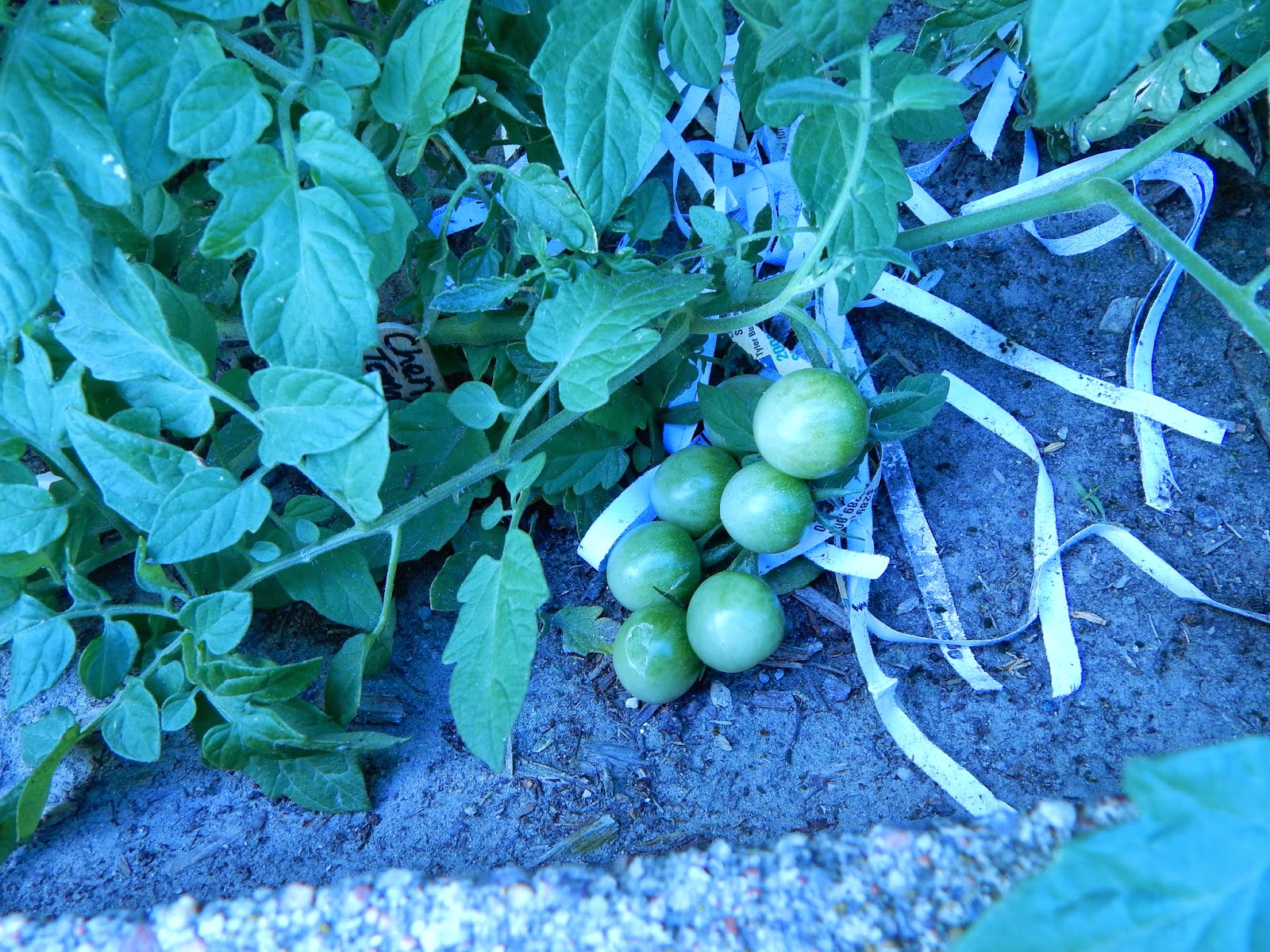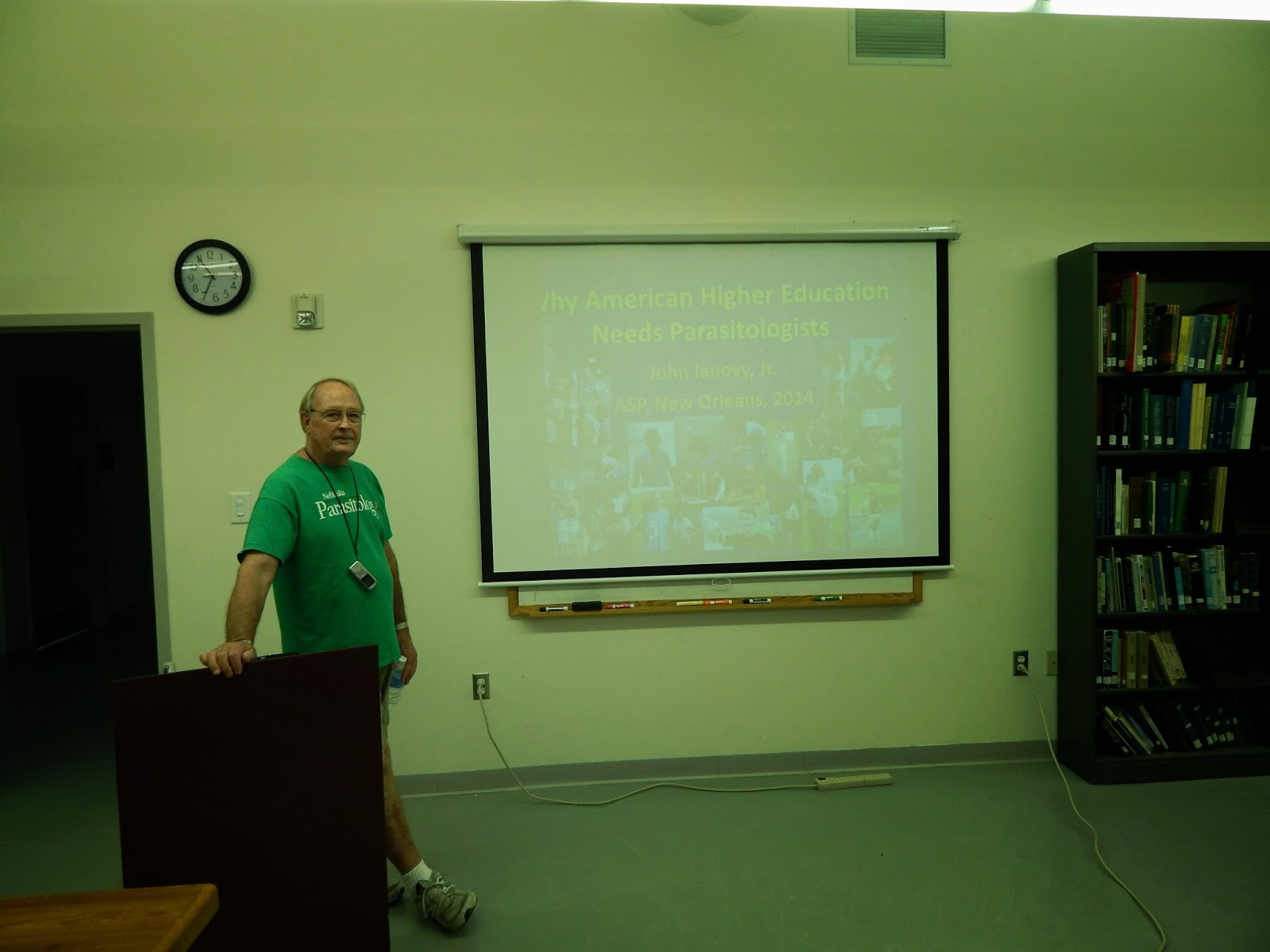Excerpt Submitted By: J. J. Morrow
A few people have been asking me about my zombie novel lately, so I thought I might share some of it with my fellow Cedar Pointians. I wrote the novel as part of National Novel Writer's Month (NaNoWriMo) in 2012 and just recently felt it was ready for e-publication. The story has multiple settings, but the last half of the book centers around a field station inspired by Cedar Point. The following excerpt comes from chapter seventeen, which is titled "Disrupting Homeostasis". I chose this particular excerpt because the last few weeks have seen lots of parasite research, so it seemed appropriate. At this point in the story, the characters have made the field station their new home and have begun research to try to figure out what causes people to turn into zombie-like creatures known as "wobanzis". The book is titled Rise of the Wobanzi and has been published as an e-book, which can be purchased from the following website:
The Excerpt:
Connie poked her head into the lab to see Zoey staring into her microscope.
Slides were scattered all over the table around her and she had skipped
the last two meals with the group in order to keep working.
Connie walked over to her, “Z? I
brought you a burger…Cayson said this is how you like them, with pickles and
ketchup!” She paused for a moment trying
to gauge the reaction…or more precisely the lack thereof…from the dedicated
biologist. “You really should eat something.
The mind can’t work if the belly is empty.”
Zoey pulled her tired eyes back
from the eyepieces of her compound microscope and rubbed her aching head. She didn't realize how long she had been
staring at the tiny red blood cells of seemingly healthy wobanzis. “Thanks Connie, I shouldn't eat it in here
though, let’s step outside into the hall.”
Connie smiled, “I made you coffee
too, it’s on the table out there.” Zoey
grinned at the thoughtful librarian. She
couldn't help thinking about how much help Connie had been to everyone. She carried her weight with chores
(especially the gardening), she had practically memorized that book on edible
fungi (which had been very helpful in supplementing their food supply), and she
always seemed to intuitively know when someone needed a little cheering up. Zoey was thankful to have such a wonderful
friend who had survived all of the insanity that this new world had to offer. She stepped out into the hall and began to
eat the lukewarm burger.
“Can I go look at your slide?”
Connie asked with wide, curious eyes.
“Sure thing,” Zoey replied, “Just
don’t move anything, I need to know where I was when I stopped scanning.” An
excited Connie ambled back into the lab as Zoey sipped her coffee and finished
off her dinner.
Connie came back out into the
hallway a few minutes later. “Cool stuff. What are you looking at?”
“Blood.” Zoey answered.
Connie nodded her head excitedly,
“So what are all of those round thingies?”
Zoey gave a short laugh, “Which
ones? There are lots of red blood cells,
which are the small, red, disc-shaped ones.
Then there are a number of different kinds of white blood cells, like
basophils, neutrophils, eosinophils, lymphocytes, monocytes, and macrophages.”
“Whoa…that’s a lot of different
kinds of white blood cells.” Connie said in a stunned tone.
“Yeah, they are pretty important. They all have different jobs, but basically
they fight infection. We've seen a lot
of white blood cells in the samples, which makes sense because these came from
people who are infected, but we can’t seem to find what’s causing them to
become infected. We don’t know what
these cells were fighting off.” Zoey replied.
“So what is the one with the little
squiggly things coming off of it?” Connie asked.
“What do you mean?” Zoey responded
with a confused look on her face.
“You know, the squiggly things that
were coming off of that thing that wasn't one of the red blood cells.” Connie
said matter-of-factly. She motioned Zoey
back into the lab and pointed at the microscope. Zoey sat down and looked at into the
microscope.
“Well, there are the red blood
cells and that macrophage off to the right” Zoey said as she examined the field
of view.
“Yeah!” Connie exclaimed, “that
thing off to the right, what are the little squiggly things coming out of it?”
Zoey stared at Connie for a moment as if she was crazy, and then returned to
gazing into the eyepieces. She stared at
the macrophage and noticed a tiny flicker. “What the…” Zoey blurted out as she
centered the field of view around the macrophage and went up to a higher
objective lens. Zoey adjusted her
lighting and carefully brought the macrophage specimen into focus. There, right under her nose, literally, she
saw something she had not noticed in scanning the dozens of slides she had
examined over the past few weeks. The
macrophage had tiny whip-like structures extending from its sides. They were so faint that she had never noticed
them before when scanning at a lower power.
“Oh my God! These are flagella!!!” Zoey shouted in
excitement. She jumped out of her chair
and hugged Connie who was taken completely by surprise. She started laughing and jumping up and down
saying, “We found it! We found it! We found it!
Ha! And it IS a parasite!!!”
Connie stood stunned wishing she
knew what had just happened. “What’s a
flagella?”
Zoey’s teaching assistant instincts
kicked in as she corrected Connie, “A flagellum, many flagella.”
Connie stared
at her with a look of utter disorientation.
“Sorry,” Zoey replied, “I’ve been teaching biology for way too long. That squiggly thing you saw,” Connie nodded
her head as Zoey continued, “it’s not supposed to be there on a macrophage. It is there because this thing isn’t a macrophage at all! This must be
some new parasite! This could be what turns people into wobanzis!!!”
Connie’s eyes lit up as her jaw
dropped, “You mean, I just did science?!” Zoey grabbed the beaming librarian
for another big hug.
“Yes! Connie, yes! You did wonderful science! We have to go get the others. I’ll grab Violet, and you go get Adelaide!” Connie nodded enthusiastically and the two
took off to find the others.
After a few minutes, it seemed like
everyone had heard the news and made their way towards the laboratory. The three biologists took turns gazing into
the microscope and nodding at one another.
They spent the next few hours going through other blood samples and
finding more and more of the macrophage-mimicking parasites.
The next few days were filled with
a renewed sense of purpose for almost everyone.
The seedlings were growing fast and working in the garden became a new
favorite pastime of most people in the group.
The raids were turning up lots of useful items that were not only good
for survival, but also made living at the station more comfortable and exciting. They were playing scavenged board games and
card games that they kept in a bookshelf nestled in the back of the dining hall
near the fireplace. They were using
thick, warm towels after showers. They
had even found a dehydrator and were making their own deer and turkey jerky as
well as drying out some of the wild fruits that they were beginning to harvest.
All the while, their researchers
were starting to figure out how the parasite life cycle worked. From samples, and from decapitating a few wobanzis,
they had worked out more and more about the pathology of the parasites. It seemed that the parasite mimicked
macrophages in the blood to avoid being detected by the host’s immune system. They moved and acted just like macrophages,
and probably had similar receptors. Some
of the parasites would move to the salivary glands and come out in the saliva
when an infected person bit someone. This
was how the parasites were transferred. The
parasites were ubiquitous in most of the blood samples they had examined.
They also found that the parasites
were present in the amygdala of the brain.
This, Zoey hypothesized, was how people’s behaviors were changed. The parasite probably changed hormone levels
in the body by changing neurotransmitter levels in the brain, similar to the
way that Toxoplasma gondii changes
the behavior of rats. They also found that some people
had the parasites in their retinas. Violet
knew that this probably caused the inflammation of the choroid in the eyes,
which gave them that milky appearance in wobanzis that couldn’t see well.
It was all starting to make sense
and they were learning more and more every day as the frenzied research
continued.
They had taken their first
steps to understanding the wobanzi disease and they now understood just why it
was spread through bites.
Like all good
research, the answers they discovered birthed an array of new questions.
The biggest question that was on everyone’s
mind was now that the cause was known; could there be a way to prevent it?
Or better yet, could it actually be cured?
Check out other J.J. Morrow book here!
















































